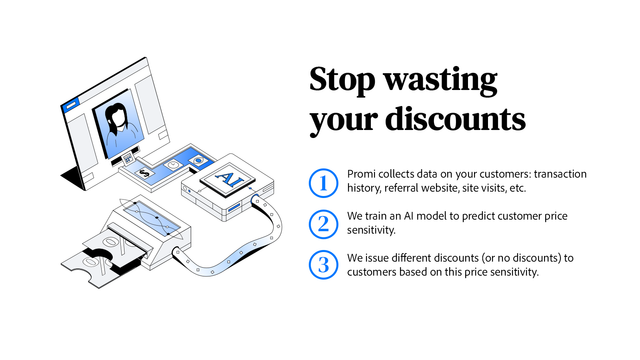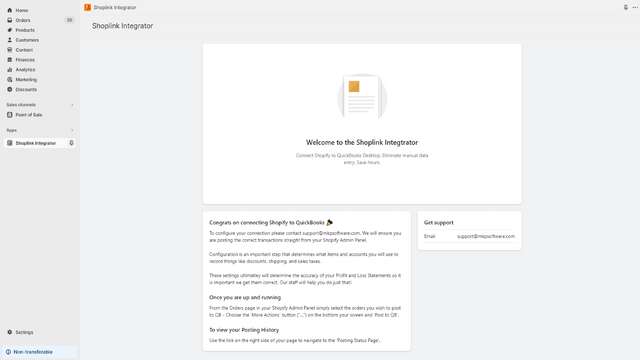In today's digital age, where online shopping has become the norm, providing exceptional customer service is more important than ever for online stores to thrive. Customers have high expectations when it comes to their online shopping experience, and a single negative encounter with poor customer service can drive them away forever. Therefore, it is crucial for online retailers to focus on implementing key improvements to their customer service strategies. In this article, we will explore the five key customer service improvements that online stores need to prioritize to stay competitive and build customer loyalty.
Understanding the Importance of Customer Service in E-commerce
Before we dive into the specific improvements, let's first establish why customer service is crucial for online businesses. In the virtual realm, where face-to-face interactions are absent, customer service acts as the bridge between the brand and the customer. Good customer service can enhance the overall online shopping experience, build trust, and ultimately increase customer satisfaction and loyalty.
Furthermore, in the fast-paced world of e-commerce, where competition is fierce and choices are abundant, exceptional customer service can be a key differentiator for businesses. It is not just about resolving issues; it is about creating memorable interactions that leave a lasting impression on customers. Personalized responses, proactive communication, and going the extra mile can turn a one-time buyer into a loyal advocate for your brand.
The Role of Customer Service in Online Shopping
Customer service plays a pivotal role in online shopping. It helps customers navigate through the various stages of their buying journey, from pre-purchase inquiries to post-purchase support. Online stores must be easily accessible to customers, providing them with timely and efficient assistance whenever needed. Failure to do so can result in lost sales and a negative brand reputation.
Moreover, customer service is not just about addressing problems; it is also an opportunity to upsell and cross-sell products or services. By understanding customer needs and preferences, businesses can tailor their recommendations and create additional value for shoppers. This personalized approach can lead to increased average order values and repeat purchases, driving revenue growth for e-commerce companies.
The Impact of Poor Customer Service on Online Businesses
On the other hand, poor customer service can have detrimental effects on online businesses. Customers who experience subpar support are more likely to abandon their carts, spread negative reviews, and seek alternatives elsewhere. With numerous online stores available, customers have the freedom to choose where they invest their money, and they are more likely to choose businesses that prioritize exceptional customer service.
Additionally, the negative impact of poor customer service extends beyond individual transactions. It can tarnish a brand's reputation in the digital landscape, leading to long-term consequences such as decreased customer trust and loyalty. In today's interconnected world, dissatisfied customers can quickly share their experiences on social media platforms, amplifying the reach of negative feedback and potentially deterring new customers from engaging with the brand.
The Five Key Improvements for Online Customer Service
Now that we understand the importance of customer service in e-commerce, let's explore the five key improvements that online stores should focus on implementing.
Improvement 1: Enhancing Website Navigation and User Experience
A well-designed and user-friendly website is the foundation of a positive customer experience. Online stores must ensure that their websites are easy to navigate and intuitive for customers to find products, information, and support. Streamlining the search and navigation process can significantly reduce customer frustration and improve overall satisfaction.
Imagine a customer visiting an online store and effortlessly finding the exact product they are looking for within seconds. The website's intuitive design guides them seamlessly through different categories and subcategories, making their shopping experience a breeze. With clear and concise menus, the customer can easily explore various sections, read product descriptions, and compare prices without any confusion. The website's navigation is so smooth that the customer feels like they have a personal shopping assistant guiding them through their journey.
Improvement 2: Streamlining the Checkout Process
Nothing is more frustrating for customers than a lengthy and complicated checkout process. Online stores must strive to simplify the checkout process, removing unnecessary steps and distractions. Implementing features such as guest checkout, saved payment details, and progress indicators can reduce cart abandonment rates and increase conversions.
Picture a customer reaching the checkout page and being pleasantly surprised by its simplicity. The online store has eliminated any unnecessary forms or excessive information requirements, allowing the customer to swiftly enter their shipping and payment details. With the option to save their payment information securely for future purchases, the customer feels confident and at ease. As they progress through the checkout process, clear progress indicators assure them that they are just a few steps away from completing their purchase.
Improvement 3: Implementing Efficient Customer Support Channels
Providing multiple customer support channels is essential for catering to customers' diverse preferences. Online stores should offer channels such as live chat, email, phone support, and social media engagement. Additionally, integrating chatbots or AI-powered systems can provide faster responses and support outside of regular business hours.
Imagine a customer encountering an issue while browsing an online store late at night. They are pleasantly surprised to find a live chat option available, allowing them to instantly connect with a knowledgeable support representative. The chatbot intelligently understands their query and provides relevant solutions, saving the customer from waiting until the next day for assistance. The online store's commitment to efficient customer support channels ensures that customers' concerns are addressed promptly, regardless of the time of day.
Improvement 4: Offering Flexible Return and Refund Policies
Returns and refunds are an inevitable part of online shopping. By offering flexible return and refund policies, online stores can instill confidence in customers and eliminate any uncertainties that may deter them from making a purchase. Clearly communicating the return process and providing hassle-free return options can enhance customer trust and satisfaction.
Imagine a customer purchasing a product from an online store and feeling reassured by the store's transparent return and refund policies. The store clearly communicates that if the customer is not satisfied with their purchase, they can easily initiate a return and receive a hassle-free refund. The customer feels confident in their decision to shop at this store, knowing that their satisfaction is the top priority. With such flexible policies in place, the customer feels empowered and more willing to explore different products without the fear of being stuck with an unsatisfactory purchase.
Improvement 5: Personalizing Customer Interactions
Personalization is key to creating meaningful connections with customers. Online stores can employ personalization techniques such as personalized recommendations, targeted promotions, and tailored communication to make customers feel valued and appreciated. Showing genuine interest in customers' needs and preferences can significantly enhance the overall customer experience.
Imagine a customer receiving an email from an online store, addressing them by their first name and recommending products based on their previous purchases. The customer feels a sense of appreciation and realizes that the store genuinely understands their preferences. The online store's personalized communication makes the customer feel valued and encourages them to explore the recommended products. By tailoring their interactions, the store creates a unique and memorable experience for each customer, fostering a long-lasting relationship.
Measuring the Impact of Customer Service Improvements
After implementing these customer service improvements, it is vital for online stores to measure their impact to gauge the effectiveness of the implemented strategies. Let's explore some key metrics to track:
Tracking Customer Satisfaction Metrics
Customer satisfaction surveys, feedback forms, and reviews are valuable tools to assess overall satisfaction levels. Analyzing these metrics can help online stores identify areas of improvement and make necessary adjustments to enhance customer service further.
Analyzing Customer Retention Rates
Customer retention is a powerful indicator of customer service success. Tracking repeat purchases and customer retention rates can provide valuable insights into how well online stores are meeting customer needs and expectations.
Evaluating Sales and Revenue Growth
Ultimately, the success of customer service improvements can be measured by analyzing sales and revenue growth. Positive improvements in these areas demonstrate the effectiveness of the implemented customer service strategies and their impact on the bottom line.
Maintaining and Continually Improving Customer Service Standards
Customer service should be an ongoing focus for online stores. To maintain high standards, stores must continually update their online store features to adapt to changing customer needs and expectations.
Regularly Updating Online Store Features
Technology and customer expectations are constantly evolving. Online stores must stay current by regularly updating their websites, mobile apps, and support systems to provide a seamless and up-to-date customer experience.
Training Staff for Excellent Customer Service
Well-trained and knowledgeable staff can make all the difference in delivering exceptional customer service. Investing in ongoing training programs and providing resources for staff to enhance their skills will enable stores to offer consistent customer support.
Seeking and Implementing Customer Feedback
Customer feedback is a valuable source of insight. Online stores should actively seek feedback from customers through surveys, reviews, and social media engagement. Implementing feedback-driven improvements demonstrates a commitment to customer satisfaction.
By prioritizing these five key customer service improvements and continuously monitoring their impact, online stores can elevate their customer experience and gain a competitive edge in the e-commerce landscape. Remember, the success of an online store goes beyond just selling products – it lies in building lasting relationships with customers through exceptional customer service.
Ready to take your Shopify store's customer service to the next level? Let Owlfred, your wise companion from OwlMix, guide you to the perfect tools for enhancing your online business. With our extensive directory of innovative Shopify apps, you'll find everything you need to implement the key improvements discussed in this article. From streamlining your checkout process to personalizing customer interactions, our curated selection is designed to optimize your store's performance. Don't miss out on the opportunity to build lasting relationships with your customers and gain a competitive edge. Find your next Shopify app today and watch your e-commerce experience soar!
















